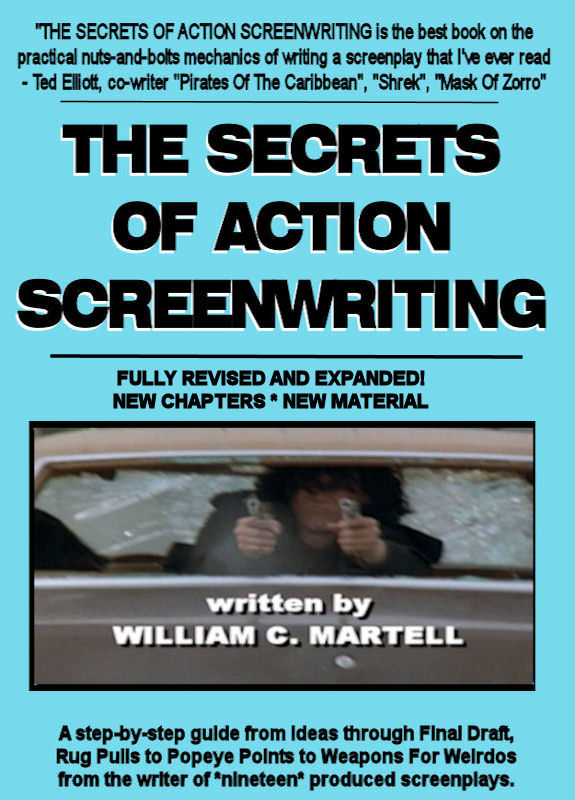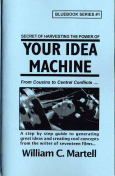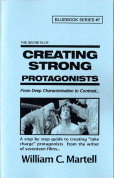
For a completely fictionalized version of the Val Lewton story, check out THE BAD AND THE BEAUTIFUL where low budget film producer Kirk Douglas gets a job making a movie about cat-men for a studio... and realizes the best man in a cat suit still looks stupid, so he decides to use suspense and dread instead of dudes in costumes and ends up with a hit. Lewton had the same thing happen at RKO - he got a job making horror movies in the low budget division and ended up making a bunch of classic horror films like CAT PEOPLE and ISLE OF THE DEAD and LEOPARD MAN. These films played on Bob Wilkins Creature Features when I was a kid and on the Saturday afternoon movies sometimes, and they scared me. Scared me deeper than any of the other fright-fest movies. They played on my secrets fears, and touched me on some primitive level that caused them to live on in my childhood nightmares. As a jaded teenager when I watched these films, they still scared me. As an adult watching these films at the UC Theater in Berkeley, they still scared me. I bought the box set on DVD a couple of years ago, and they still scare me. Okay, I know that it’s a movie and I know that there’s no such thing as women who turn into panthers when they get horny and these movies are in black and white and shot on sound stages and are fake... but they still work just like that original version of THE HAUNTING works and the remake does not. Robert Wise directed THE HAUNTING... and was one of Val Lewton’s three “staff directors” in his horror division at RKO.
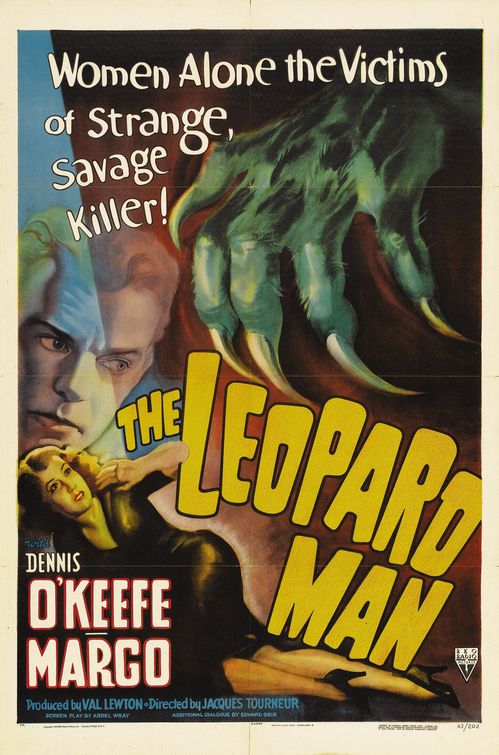
THE LEOPARD MAN is one of those trifecta movies for me like REAR WINDOW - produced by Val Lewton, directed by the great Jacques Tourneur (OUT OF THE PAST) and based on a novel by Cornel Woolrich (REAR WINDOW). A bunch of my favorite people working together! The Woolrich novel is one of his “Black” series, where noir gets its name (Noir was a fiction genre in the 1800s, but it's resurgence in the 30s and 40s was due to the publication of novels and stories by the three fathers of modern noir: Woolrich, McCoy and James. M. Cain), and the novel BLACK ALIBI is an intense page turner. The book and movie have different endings, take place in different cities, and have some other minor differences, but the film is pretty faithful to the book. The main way it is faithful is the use of suspense and dread, which are really why all of the Lewton movies work so well. They all have these great suspense sequences that build and build and build...
So let’s take a look at one of those great scenes from LEOPARD MAN, tear it apart and see how it ticks. This scene is almost word-for-word from the novel. Oh, I guess it needs some set up...
Kiki Walker (Jean Brooks) is a night club singer stuck in New Mexico with her promoter Jerry Manning (the great Dennis O’Keefe) where the big star is flamenco dancer Clo-Clo (exotic one-named actress Margo). In order to steal the show from Clo-Clo, Jerry comes up with this great stunt - a rented leopard on a leash that Kiki will walk in with during Clo-Clo’s performance... then Kiki will go on and become the big star. Only things don’t go exactly as planned and the leopard escapes into the night. Now, the leopard is on the loose in the New Mexico town... waiting to attack anyone who ventures out at night. Both the novel and film have an interesting structure, which has Jerry and Kiki as the leads - but often in the background of a sequence. This is the first leopard attack, and it goes from the panic after the leopard escapes to Clo-Clo walking home at night and townspeople saying hello to her along the way... one of whom is Teresa Delgado, who becomes the lead character in this sequence.
Now let’s take a look at how that sequence works...
1) SUSPENSE is the anticipation of a known action. It is *not* the action - and the longer the anticipation is stretched out, the greater the suspense. A *known* action means the audience knows what is (probably) going to happen and that creates the suspense. Hitchcock’s examples were the two men discussing baseball statistics while a bomb with a timer ticks away under the table - and he directed a TV episode based on a Woolrich short story called 4 O’CLOCK about a man who rigs a bomb to kill his cheating wife and her lover at 4pm... then his house gets robbed and the robbers tie him up in the basement across from that ticking bomb. As each minute passes, the suspense builds. We *know* what will happen at 4pm, and the anticipation of that explosion is what creates the suspense. Hitch’s other example was similar to a scene from REAR WINDOW, where someone is searching an apartment and does not know that the apartment resident is climbing the stairs and will soon discover the searcher. This version of suspense has two things we do not want to see in the same shot getting closer and closer - like two trains on the same tracks hurtling toward each other. Even though the searcher does not know about the resident getting closer, the *audience knows*, and that’s where the suspense comes from. It’s Dramatic Irony - the audience knows what the character does not. Suspense is created by the anticipation of the resident discovering the searcher in his apartment... what will Grace Kelly do?
2) DREAD is the anticipation of an *unknown* action. We know that something bad is going to happen, but are not sure exactly what is going to happen or where the threat is coming from. Dread is usually the version of suspense that we find in a horror movie, because a major element in horror is *fear of the unknown*. For dread to work, we need to create a situation where a bad action of some sort might happen...
3) Like an escaped leopard in the town. That is the HORROR SITUATION, the same way Jason wandering around Camp Crystal Lake with his machete is a horror situation. This is the first requirement for a scene of dread - what the heck are we dreading? It must be established in some early scene, and like Jason wandering around with his machete, the escaped leopard will create the horror situation for the entire movie.

4) The SEQUENCE SITUATION. Okay, we know the leopard is out there waiting to kill someone, now we have to get some tasty someone out there to be killed. This is where horror movies often stumble - the stupid teens go into the house where the crazy old lady with the knitting needles is supposed to be hiding, and the last people who went into that house had their eyes needled out and died... so let’s just go in and look around, okay? You need some *good reason* to go into that house... or out into the town after dark when there’s a hungry leopard roaming the streets. So we have Mrs. Delgado run out of cornmeal while making dinner, and sending Teresa out into the night to buy some. The further motivation is that this is *Mr. Delgado’s* dinner, and mom doesn’t want her hard working husband to come home and not have the dinner he deserves. So Teresa will have to go to the store - simple as that.
5) REMIND US WHY. That escaped leopard was, like, ten minutes ago. We need to remind the audience why Teresa doesn’t want to go to the store. This isn’t done because the audience is stupid or forgetful - the title has “Leopard” in it - but to “poke the tiger”. Let’s say we have that bomb under the table while the two guys discuss baseball statistics from the Hitchcock example - if we never show the ticking bomb, we have lost the suspense. Even though the audience knows the bomb is under the table, we need to keep showing it to keep that fear in the forefront of their minds... so that they don’t get interested in those baseball stats. Every time we show that bomb, we are poking the tiger - and poking the audience’s fear. So when Teresa’s little brother makes the hand-shadow on the wall of the tiger, it reminds us what is out there. It puts it back in the front of our minds. Yes, we knew it was there, but the reminder pokes us.
6) TWO-FERS! Why the hand-shadow thing is genius - the leopard will be hiding in the shadows! So turning the leopard into a shadow in this scene makes us fear the shadows. Any time you have several ways to do something, look for one that is a “two-fer” - that manages to do two or more things at the same time.
7) MAKE US SYMPATHIZE. Okay, we have a teenaged girl about to go outside where a vicious leopard may be waiting, you’d think that was enough to make us sympathize with her, right? Well, probably... but why not do a little more? Why not show her fear? The problem with those stupid teens that waltz into the crazy knitting needle house is that they don’t show the basic fear anyone with an IQ over 70 would have. So let’s make Teresa smart enough to know she might get killed by that leopard, and try everything to get back into the house. This shows us that she’s afraid, and also shows us that she isn’t stupid - and both things make us sympathize with her. Of course if she is allowed to stay in the house we lose all of the dread... so her mean mom sends her back outside to get the cornmeal and tells her not to come back without it... and then does something that seems like part of this scene, but is actually a set up for a later scene: she bolts the door closed so Teresa can not sneak back in. Now Teresa has NO CHOICE but to go out into the night and get that corn meal.
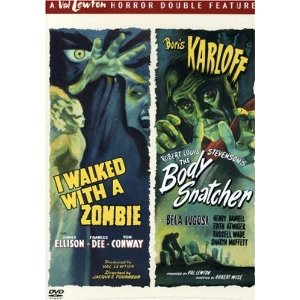
8) NO EASY OUTS. One of the great ways to ratchet up suspense and dread is to create an easy solution to the problem... then yank it away. This knocks the audience off balance, and also tells them that there will not be an easy solution here - things are going to get worse. Because dread is the anticipation of an unknown event, we need to find ways to make things worse without tipping our hand to what, exactly, is going to happen. By having Teresa go to the “Provisions” market close to home, and have them closed, and the owner unwilling to reopen just for her; we have just made things worse without actually doing anything. No leopard has attacked her, yet. She isn’t even far from home... but she has already hit a roadblock. There has already been a reversal of fortune that has popped Teresa deeper into trouble. If she had just gone straight across the arroyo to the other market without going to the “Provisions” market, she would not have seemed as if she were in as much danger. This set back makes the trip to the other market a larger problem. Oh, and I love the situational irony that if Teresa had not fought with her mother for so long about going out, she would probably have made it to the “Provisions” market before it closed.
9) SPOOKY SETTINGS. To get to the other market before it closes, Teresa takes a short cut through the arroyo and under the Rail Road Trestle. This scene is wall-to-wall dread. The location is unpopulated - no one there to help her. She is *alone*, and that makes her vulnerable. It is dark and spooky and bathed in shadows - and we have already been tipped to the black leopard hiding in shadows by the brother’s shadow-puppet. Under the train trestle is all shadows. When you are creating dread, find the spooky location that’s frightening even before you tell us there may be a hungry leopard roaming around in there. In CAT PEOPLE there is a great dread scene in an indoor swimming pool at night - one of the characters is stealing a swim, so there are very few lights on. The combination of darkness and water and being indoors all makes that location somewhere you wouldn’t want to be... then add that cat woman with her claws and... The dark train trestle is a spooky location - and the scene where Teresa walks under it is stretched out for maximum dread. Oh, but there are two more things about Teresa and the Train Trestle...
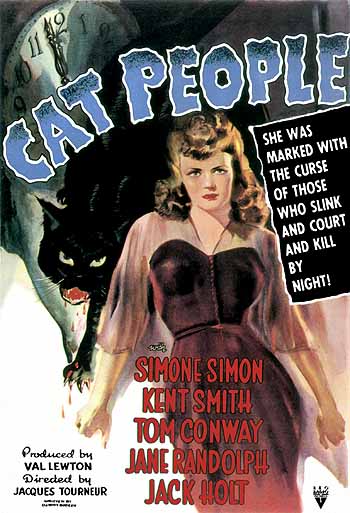
10) SCHLOCK SHOCK. You know those damned cats that jump out of cupboards in horror movies? Those hands that suddenly grab the lead’s shoulder, and turn out to be their friend? That stuff is what I call schlock shock. Schlock is poorly made, shoddy, merchandise. So Schlock Shock is a cheap jump moment. But it serves a couple of purposes - it is usually a diversion followed by the *real* shock moment. The cat jumps out of the cupboard, the audience screams for a moment, then realizes it is just a cat... and let’s their guard down... and then the killer crashes through the window! Because the audience has let their guard down the killer crashing through the window is a bigger scare. The other purpose for schlock shock is to “poke the tiger” some more. To remind us that bad things could happen at any minute. After an excruciating walk through that darkness (where there is standing water) she comes out the other side without encountering any leopards. Then that tumble weed comes skittering out from the darkness under the train trestle, we jump out of our skin for a moment... then realize it’s just a tumbleweed... then realize there could easily be a leopard in that darkness, too. We are reminded of the reason for our terror... Now, that has been one great bit of dread... but it was *really* just the set up for the return trip!
11) BREAKING THE TENSION. A good screenplay is peaks and valleys. Too much action, too much suspense, too much tension... dissipates the effectiveness. So to keep that dread strong, we need to mix it up a little. After that schlock shock tumbleweed, we get to the bright, well lighted market with the kind old man behind the counter. Guess what? Teresa has made it to her goal! She has made it to the market to buy the cornmeal. We can breath a sigh of relief, right? All of the elements here tell us that she is safe, that the leopard is not going to get her, that she will get that cornmeal home to mom and dad will have that dinner he deserves after his long day at work. The store keeper is paternal and funny and jokes with Teresa. And they have a conversation about being afraid of the dark, which is a great two-fer because it makes us think this might all be about Teresa having this silly childhood fear which puts us at ease... but also poke that tiger a little because it is still dark outside and there is still a leopard out there. Hmmm, I wonder which it will be? All just her imagination? Or a serious threat of leopard attack? This two-fer manages to keep us in unknown territory! When Teresa says she’s not really afraid of the dark, what could happen to her? We think “Leopard attack!” She prompts our thoughts of the danger in this situation.
And when she says that she is not afraid of the dark, that is not the truth, it is what she wishes were true. The safety of the market has allowed her to push her fears back into her subconscious and pretend they do not exist. She *says* that she is not afraid, but moments later she wil be back in the darkness, surrounded by shadows, and we will see that her actions speak louder than her words.
12) Though this has nothing to do with dread or horror or suspense, I love this line from screenwriter Ardel Wray, “The poor don’t cheat one another, we’re all poor together.”
13) SECOND TIME TERROR. Okay, the last time Teresa was at this train trestle the only danger came from a tumble weed, so it’s safe, right? Here’s the great thing about going back to the train trestle - we already know it is spooky, and the audience secretly knows we wouldn’t be going back there unless something was going to happen this time. It can’t just be another tumble weed. If it was just the spooky location again and nothing happens it’s a waste of time... so our dread grows because this is a *known* location, and horror is fear of the *unknown*, so if nothing was going to happen she’d have to walk through some *unknown* spooky place. Our subconscious tells us that you don’t go back to a spooky location where nothing happens twice - so something is going to happen this time... but what? Unknown. Teresa creeps to the dark trestle, shadows, dripping water, darkness...

14) TRIPLE SHOCK. Remember how I said Schlock Shock was a great way to make the audience lower their guard so that you can get ‘em with real shock? LEOPARD MAN has a great twist on that method - and any time you can break the pattern in a way that works better than the pattern is great. Here, we have Teresa see what appear to be a pair of glowing eyes in the darkness under the trestle... the leopard? Then the eyes disappear - was it just her imagination? Teresa takes a few steps deeper into the darkness under the train trestle, and we *know* those were the eyes of a leopard and it is now about to pounce on her! Just when the audience thinks this is going to be a real leopard attack... a train ROARS over the trestle - schlock shock! We jump out of our skins, then relax when we realize it was just a train, then remember those eyes in the darkness - we should not have relaxed! When Teresa recovers from the train scare and makes it all of the way through the darkness under the train trestle - which is stretched out to our breaking point, she doesn’t make it through quickly because that would kill the building dread - she looks up and sees the leopard! Waiting for her. The killer she has spent the entire sequence trying to avoid is now RIGHT THERE. And she is in serious trouble. Instead of the schlock shock/relax/real shock rhythm we get a possible real/relax/schlock shock/relax/real shock rhythm that we don’t expect.
15) RUN FOR YOUR LIFE! The leopard pounces! Now that we have seen the leopard, we no longer have fear of the unknown and no longer have dread - so we switch to suspense and suspense techniques. A chase where the antagonist is getting closer and closer and closer is a basic way to create suspense - you’ve seen it in hundreds of movies, at least one with Cary Grant and a crop duster where there ain’t no crops. You have also seen it in a hundred horror movies, at least one with Michael Myers chasing Jamie Lee Curtis in Haddonfield on Halloween. And we get that chase here as well, including the typical heroine trip. What saves this trip from cliche country is that she spills the cornmeal all over the place - the very reason she was out in this dangerous situation in the first place! Ironic, isn’t it? Teresa trips, falls, spills the cornmeal, then scrambles to her feet and runs home with that hungry leopard in hot pursuit!
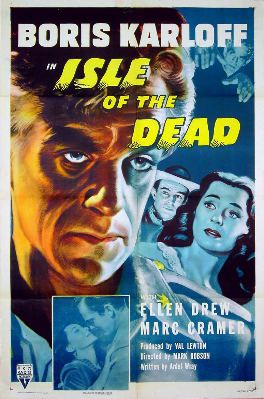
16) DRAMATIC IRONY = SUSPENSE. For reasons we will get to in our next section, instead of showing the end of this chase scene, we go back inside the Delgado house. This allows some more of that wonderful dramatic irony, plus some great suspense. You may have noticed that two are often connected - if the audience knows something that the characters do not, we want to yell at the screen that the characters are making a mistake. That’s what happens here - I don’t know if this scene was gut wrenching for you or not, but it was for me. We start out with mom drying dishes and the brother reading the comics when there is POUNDING on the front door and Teresa yells “Let me in, let me in! If you love me, let me in!” And mom turns to the brother and says something about Teresa dilly-dallying and spending half the night just to get cornmeal. Not taking the threat we know is real seriously. We know Teresa has just outrun a freakin’ leopard to get to the front door - which is bolted - and her mom thinks she is just being pushy like a typical teenager. And the more the mom says pointless and unnecessary things, the more the suspense grows - it’s like those guys discussing baseball statistics! The less mom seems to care about Teresa’s problems outside the door, the more WE care... and the more we want to scream at her to shut the eff up and get that door open before the leopard attacks! The more mom says things that are mundane or boring or do not matter, the greater the suspense - due to the dramatic irony of the situation. We know Teresa is going to be *killed* if mom doesn’t do something right now, but mom doesn’t know this.
17) EVEN MORE SUSPENSE. Mom figures out something might be wrong when Teresa SCREAMS, and now she runs to the door to open it. But remember when she bolted the door at the beginning of this sequence so that Teresa couldn’t sneak back in? I’ll bet your forgot up until now - there’s been so much dread and suspense and fear, how could you remember a locked door? Well, that bolt is *stuck* and no matter how hard mom tries to shoot it open, it just won’t budge. Which creates suspense - will she get the bolt open and the door open before the leopard rips her daughter to shreds? The brother runs to get a block of wood to use as a hammer to POUND that bolt open. Suspense isn’t just that main thing, it is all of the details and actions that are part of the main thing. Each one of those details, like running to get that block of wood, extends and strengthens the suspense - in a way, those are tiger pokes. Just trying to loosen the bolt isn’t enough action to keep the suspense going, we need plans and possibilities. We need things that do not work - which are similar to that “provisions” market in that the failure builds our dread, builds our fear, escalates the terror.
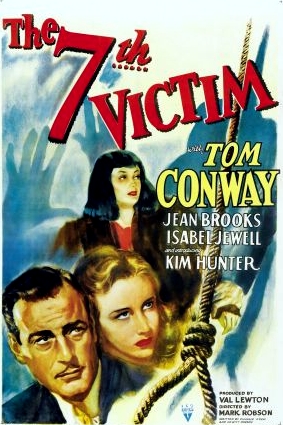
18) VIOLENT ACTION. Since dread is the anticipation of an *unknown* action, we eventually have to get to the action or it has all been a tease. The difference between these Val Lewton movies and today’s gorefests is how they show the action. Not whether there is action or not, not whether the action is bloody and gory or not - but what they decide to show and what they leave up to your imagination. So the decision is made *not* to show cute little Teresa being ripped to shreds, which is one of the reasons we go inside the Delgado house instead of stay outside that door with Teresa and the leopard. We get that nice suspense bonus from being inside the house, but I doubt the censors would have allowed them to show Teresa being killed back in 1943. But if you think by not showing it the action is not violent, you are dead wrong. This is a horror movie. The level of violence is horrific. We just don’t see it. Teresa screams, the leopard growls, there are the sounds of a vicious and violent attack... and then... that pool of blood practically pours from under the door! That pool of blood is visual proof of the carnage on the other side of that door - and we need that proof to fill in all of the ugly details with our imagination. That blood tells us Teresa is dead. Without that blood, she may still be okay, just in need of a doctor. But the blood is a coda to the scene. Gotta have it.
19) EMOTION PICTURES. Movies are about emotions. Creating the emotions in the viewer, like dread and fear and suspense... but also allowing the viewer to feel the emotions of characters. One of the greatest parts of this sequence is when Teresa’s mom realizes that her daughter is in real danger and she has not believed her. And that whatever happens to her daughter, she bares some of the responsibility... and will feel as if it is all her fault. This is a gut wrenching emotional scene - Teresa’s mom realizes that she has doubted her daughter, and that doubt has lead to her daughter’s death. It is only a line, a moment, in the scene - but that moment is powerful emotions that will haunt us. Look for moments of emotion in your scenes, and remember that the most powerful emotions are the ones that make us uncomfortable. A mother realizing she may have killed her own daughter is more powerful than all of those scream moments in the film. Those are the emotions of great tragedy... and that is why LEOPARD MAN is more than just a cheapo horror movie from the 1940s... it is a work of art, and one of Martin Scorsese’s favorite films.
20) You may have noticed that this sequence works in the basic three act structure: introduce the conflict, the conflict escalates, a midpoint (the market), the conflict escalates further, then the resolution of the conflict. Hard to avoid something so basic. This sequence seems like a stand-alone, but it is actually one of several sequences where the leopard attacks again and again, escalating the conflict for Jerry and Kiki who are responsible for the leopard’s escape. With every new victim, they get into more trouble with the town and the police and it becomes more apparent that Jerry will have to capture or kill the leopard himself. He is pulled deeper and deeper into the quicksand with every new victim, and must find a way out. Each sequence ends by tying Jerry and Kiki back into the story - with their problems worse than before.
Okay, that is one of a handful of sequences in LEOPARD MAN where people and leopards eventually meet without a pleasant outcome. It’s a good example of how to build dread and also how to create gory bloody violent deaths - that are not graphic. Just because the death is not shown doesn’t mean that it is pleasant and doesn’t mean that the audience doesn’t experience it. We want to make sure there is horror in the horror! If we can’t see it, you need to make sure we imagine it. This scene is a great example of how to make a scene scary and keep the fear and dread building until the violent pay off. Things to consider if you are writing a horror or suspense script.
Hey, what does that look like on that page? Do we just write “scary things happen” and the director makes up all of the details? Nope! Below is this sequence from the shooting script of LEOPARD MAN by Ardel Wray - and all of the thrills and chills are there on the page. Check it out!
INT. DELGADO HOUSE - NIGHT
The Delgado house is typical of the poorer Mexican homes in New Mexico. This main room, which is small, serves as living room, bedroom and kitchen. An Indian blanket covers the doorway into the only other room. The adobe walls are plastered with pictures of religious subjects.
The wooden floor is bare. There is a charcoal-burning brasero in one corner. Pots and pans on the hearth of the fireplace show that it is a supplementary stove, The rest of the furniture consists of an iron bedstead, a large and hideous oak table and an open-faced china cabinet which contains the Delgado treasures.
Pedro, Teresa's nine-year-old brother is seated at the oak table, eating from a bowl of frijoles. He is, and looks like, an imp. Teresa is backing away from her mother, who turns away from the window to face her angrily.
TERESA
(evidently resuming a discussion)
But, Mamacita -- why can't Pedro go this time? I'm so tired...
PEDRO
(complacently)
I'm too young.
SRA. DELGADO
If your father comes home and there are no tortillas, he will shout and tomorrow it will be all over town: the family of Juan Delgado is too poor to buy corn meal! Do you wish we should be so disgraced?
Teresa shakes her head, but makes no move to go. Exasperated, Sra. Delgado reaches for the nearest weapon -- the broom.
SRA. DELGADO
Then go!
Sra. Delgado brandishes the broom toward Teresa, who backs up again.
PEDRO
I know what she's afraid of...
Pedro lifts his hand. It casts a sharp shadow on the wall behind him. Watching the shadow, he manipulates his fingers so as to create the shadow of a leopard's head in miniature.
PEDRO (CONT'D)
This!
SRA. DELGADO
And what, por todos los santos, is "this"?
Teresa braves the threatening broom and moves a step toward her mother.
TERESA
(eager to be believed)
The leopard, Mamacita. They say a lady at the El Pueblo had it on a string and it ran away. It hasn't been found yet...
SRA. DELGADO
A leopard?
PEDRO
(gleefully)
They're big -- and they jump on you!
Pedro jumps the shadow on the wall, to simulate the leap of a leopard.
SRA. DELGADO
(furiously)
Did you ever meet one of those things yet when you went to the store for me?
Teresa swallows, shakes her head mutely.
SRA. DELGADO
(bellowing)
Then you won't meet one this time either! Now get out! Do as I told you!
Sra. Delgado gives the broom such a backward swing of final purpose that Teresa hurriedly opens the door behind her and slinks out backwards -- her big liquid dark eyes, still futilely pleading, the last to disappear. Sra. Delgado moves after her, pushing the door closed.
She puts the broom in the corner and goes to where Pedro is seated. Here she stands a moment, fondly watching him as he masticates his beans. Behind her the door stealthily opens.
Teresa tries to sneak back into the room. Mamacita sees the movement and makes a tempestuous rush toward her, but Teresa sidles out of the door before she can be caught. Mamacita, muttering, slams the door shut and with difficulty pushes the heavy, rust-covered iron bolt into place.
EXT. DOORWAY DELGADO HOUSE - NIGHT
Teresa stands outside the door. We hear the heavy bolt inside driven home forcibly.
SRA. DELGADO (V.O.)
Now you will not come in again, not until you bring the corn meal with you!
EXT. STREET OUTSIDE DELGADO HOUSE - NIGHT
Teresa steps down from the single doorstep outside her house.
She crosses her arms and pulls her shoulders together in a gesture of fear. She looks once, despairingly, at the closed door behind her and then reluctantly steps out into the dirt road and starts walking.
EXT. CALDERON GROCERY - NIGHT
Only a large corner window, with the word. "Provisiones" printed on it shows that this ordinary house is a grocery store. In the moonlight, one can see a few boxes of groceries stacked on shelves inside. Teresa comes up to the window and peers in. She knocks on the window.
TERESA
Senora Calderon It is Teresa, Senor. Teresa Delgado.
Over Teresa's shoulder, we see the interior of the little store light up dimly as a curtain is pulled at the back of the room.
Beyond the curtain is revealed another room, brightly lit by a bare electric globe hanging from the ceiling on a cord. Under the light, a man sits at a table, heartily eating from a plate heaped with food.
The curtain has been pulled back by Senora Calderon. We see her only in silhouette and the details of her face and figure are indistinguishable. We do see, however, that her long black hair is down her back and she is braiding it. She walks a little ways into the darkened store.
SRA. CALDERON
(speaking loudly to be heard through the window)
The store is closed.
TERESA
I just want a sack of corn meal for my father's supper!
SRA. CALDERON
Tomorrow.
TERESA
(imploringly)
It'll just take a second. ..Please or I must go clear across the
Arroyo to the big grocery --
Teresa taps against the window hopefully. But Sra. Calderon turns back toward the doorway into the inner room, where the solitary feaster hasn't even bothered to look up during this exchange.
SRA. CALDERON
(as she goes)
It means taking off the lock again, putting on the light, measuring the meal. It's too much trouble. Once I close, I close!
Sm. Calderon steps into the inner room and draws the curtain closed behind her, as she speaks the last words. Again the store is in darkness -- only a rim of light showing around the edges of the curtained doorway.
TERESA
(quietly, hopelessly)
Senora...
There is no reply. Teresa turns away.
DISSOLVE TO:
EXT. EDGE OF ARROYO - NIGHT
The Arroyo is a deep narrow cut in the mesa, bone dry in this season. Its floor of bleached sand and weeds stretches desolately wider a vast moonlit sky. Here and there, children's feet have scuffed steep little trails down the banks.
Teresa appears at the top of one of these trails. She looks down into the Arroyo -- and then off to the right.
A distance down the Arroyo is a bridge which carries a train track across the dry river bed. To divert the rush of rain water in winter and spring, the bridge is underpropped by two slanting stone piers. They stand out like ribs against the blackness of the underpass, which they divide into three tunnels.
Teresa's face shows her dread of the Arroyo. She turns back the way she came, takes a step away, hesitates and then returns to the edge of the bank.
She starts down the little trail, her feet sliding in the loose sand and a shower of pebbles bouncing down ahead of her.
EXT. ARROYO FLOOR - NIGHT
Teresa stands at the bottom of the bank. She looks off to the bridge again. Then she starts walking forward slowly, a very little figure in the large loneliness of the night.
EXT. EAST SIDE OF BRIDGE - NIGHT
Teresa comes up to the face of the underpass with its three openings. She stares from one black tunnel mouth to another.
She glances behind her, then looks at the underpass again.
Teresa goes forward again, toward the middle tunnel.
EXT. EAST ENTRANCE OF MIDDLE TUNNEL - NIGHT
The roof of the underpass is only a little higher than Teresa's head and the passage is not more than ten feet wide.
The opening is dimly lit by the moonlight, but beyond it is dense blackness. Teresa enters slowly. She takes a few steps toward the blackness - and stops. She listens. Teresa moves forward again, walking as lightly as possible. The light dims rapidly, so that after Teresa has taken a half dozen steps, she is swallowed up in complete blackness.
The CAMERA HOLDS for a moment on the dark underpass before Teresa emerges from the blackness on the West side. A light scratching sound is heard. Teresa's eyes widen in panic as she hears it and she hurries out of the tunnel, watching fearfully ever her left shoulder. She must cut across in front of this other tunnel in order to get to the south bank.
She starts across, never taking her eyes off the black tunnel mouth. Suddenly she gives a convulsive start and a little cry escapes before she can control it. A shadowy shape, low to the ground, detaches itself from the dimness of the tunnel opening and moves toward her. Almost at once, we see that it is a large tumbleweed, blowing clown the Arroyo in the wind.
Teresa sighs soundlessly and goes on to the foot of the bank.
She starts scrambling up another steep little path.
DISSOLVE
INT. BIG GROCERY STORE - NIGHT
This is a fairly good sized room, lined with shelves and counters. A tall, Indian-type Mexican with iron-grey hair puts a paper sack of cornmeal on the counter in front of Teresa.
She starts toward the door, but noticing a bronze cage with two toy birds in it, a mechanical device which has stood there for years, she goes toward it, puts down her sack of corn meal and goes up close.
TERESA
Oh, the toy birds!
MANUEL
You've seen them before. I couldn't chase you away from the counter when you were a little girl.
She winds up the bird cage.
TERESA
I'd forgotten them.
MANUEL
(smiling, good humoredly, skeptical)
Every day you see them --and you have forgotten them? Oh, I remember my little Teresita -- I remember the little girl who was afraid of the dark. They shouldn't send you.
The birds have begun to sing, a highly mechanical rendering of a bird song.
TERESA
I'm not afraid. What could happen to me?
The birds sing and she pretends to listen. Manuel leans against the inner door of the grocery watching her, smiling and amused. Finally his smiling irks her into action. She picks up her sack of corn meal.
TERESA (CONT'D)
(as she starts off)
I'll pay you tomorrow.
MANUEL
Never fear - - next time you come.
The poor don't cheat one another.
We're all poor together.
In the bronze cage the two birds continue to sing their mechanical song. Their heads turn from side to side.
We hear the door close behind Teresa. The birds are still singing as we...
DISSOLVE TO:
EXT. CORNER WEST SIDE OF BRIDGE - NIGHT
There is a sound of slow, measured dripping. It comes from water seeping out between two rocks and dropping onto another rock below. These rocks are piled up at the juncture of the bridge and the left bank and the water is evidently leaking from some water main or sews go pipe running under the highway overhead.
EXT. WEST SIDE OF BRIDGE - NIGHT
Teresa is approaching the entrance of the middle tunnel, She is evidently scared - her footsteps are lagging and she holds the sack of corn meal in both hands, as if feeling its weight. She looks fearfully at the black tunnel before her and comes to a standstill, trying to peer into the blackness.
In the silence, the dripping of the water can be heard.
Teresa looks up and to the left to locate the sound. She sees the shining dampness on the rocks.
She turns back to the middle tunnel before her -- and, drawing a deep breath of resolution, starts to enter it. But she hesitates and then, suddenly, veers over to the left. She peers into the opening of that tunnel.
INT. OPENING OF NORTH TUNNEL - NIGHT
The wall of the tunnel is also damp with the seepage from above. It reflects the outer moonlight in glistening streaks, so that the blackness here is not so complete as in the other tunnel..
EXT. WEST SIDE OF BRIDGE - NIGHT
Teresa gets a fresh grip on the bag of corn meal by shifting her hands under it -- and walks into the entrance of the north tunnel.
INT. NORTH TUNNEL - NIGHT
Again, the crunching sound of Teresa's footsteps are magnified in the enclosure of the tunnel walls. It is very dim, but the luminosity of the damp wall casts a faint light on Teresa, reflecting in her wide, frightened eyes.
She walks slowly and lightly, her eyes going from side to side in the darkness, her neck and head held rigidly. Suddenly she stops with a sharp intake of breath, Ahead of her and to her left are two tiny gleams of light. Teresa backs away from them. As she does so, they seem to fall and vanish.
Slowly Teresa moves forward again, staring at the place where the lights had been. As she moves parallel to the spot, they appear again. A half-cry dies away in her throat --she sees that the gleams are two drops of seepage, trickling down the side of the tunnel wall.
Teresa half closes her eyes and sways a little, faint with fear. Then she forces herself to move forward again. She takes one -- two fearful steps -- and then the underpass reverberates with a sudden tremendous shock of sound - more a giant vibration than actual noise.
It is a train passing overhead.
INT. NORTH TUNNEL - NIGHT
As Teresa stands transfixed, the terrific roar continues.
Second after second, flashes of light as brilliant as lightning illuminate the interior of the tunnel the reflections thrown into the Arroyo by the train windows.
And then, as abruptly as it began, the noise ceases. It is cavernously dark in the tunnel again. In this thick stillness, Teresa walks forward once more.
EXT. EAST SIDE OF BRIDGE - NIGHT
In the frame of the tunnel opening, Teresa stands for a moment. Behind her, there is a new sound -- a mere whisper of sound carried forward on the light wind. A little shower of rubble falls from the top of the concrete pier. Teresa turns to look behind her.
Crouched on one of the piers of the trestle - and seen only very dimly in the darkness -- is the leopard, looking down into the Arroyo.
An enormous big HEAD CLOSE UP of Teresa.
An enormous big HEAD CLOSE UP of the leopard, its clear golden eyes fixed and staring.
EXT. ARROYO FLOOR - NIGHT
Teresa's nails dig into the paper sack of corn meal and little trickles of the meal start spilling from the slits.
Her eyes widen and her face falls slack from the horrible shock of what she sees. She turns and runs.
EXT EDGE OF ARROYO - NIGHT
Teresa scrambles frantically up over the edge of the bank.
She stumbles and falls and the sack of corn meal drops from her hands and spills onto the ground. In a single move, Teresa is on her feet and running again. A shadow flashes over the spilled meal and we hear a heavy, ripping snarl.
INT. DELGADO HOUSE - NIGHT
It is quiet and peaceful in the Delgado home. Senora Delgado is puttering about the brasero. Pedro, on all fours, is reading a comic book, his rump high in the air, his chin two inches from the book. Suddenly, a wild rain of knocks on the door fill the little room. Sonora Delgado, at the brasero, drops a spoon with a clatter and Pedro springs up.
TERESA'S VOICE
(screaming)
Mamacita, let me in! Let me in, let me in!
SENORA DELGADO
Hah!
Sonora Delgado smirks knowingly and puts her hands on her hips.
TERESA'S VOICE
If you love me, let me in -- !
SENORA DELGADO
(mimicking Teresa)
Mamacita -- let me in. Let me in, now that I've spent half the night getting the corn meal!
TERESA'S VOICE
It's coming - it's coming closer.
I can see it...
PEDRO
She is afraid of the leopard.
SENORA DELGADO
Just what she needs -- something to
NIP AT HER HEELS AND HURRY HER UP -
She is interrupted by a scream so high, of such agonized finality, that it makes the others before it seem like nothing at all. Mingled with the scream and blurring the end of it comes an impact of such violence that the whole door structure shakes with it from top to bottom. A puff of dust wells up around the door from the impact of the blow.
REPRO
(his voice high with fear)
Madre do Dolores, she isn't fooling!
Pedro jumps to his feet. An instant change has come over the face of Senora Delgado. She hurls herself forward.
SENORA DELGADO
(beseechingly)
Wait, Teresa! I come! I will let you in...
Senora Delgado tugs at the rusty bolt.
SEN0RA DELGADO
Only a moment, querida, hija do mi
alma -- your mother is here --
As Senora Delgado tugs vainly at the bolt, Pedro darts over to the fireplace and grabs up a stone from the hearth.
SENORA DELGADO
Your mother will let you in - -
Pedro rushes to the door and pushes his mother's hands aside.
He hammers the unruly bar back with the stone.
Then, he draws back and looks down at his feet. Senora Delgado's horrified eyes follow his glance.
Under the crack of the door seeps a dark tongue of blood, widening and lengthening on the rough wooden floor.
And here is a link to the entire script:
LEOPARD MAN screenplay by Ardel Wray.
- Bill
TODAY'S SCRIPT TIP: Writing Over 40 - how to sell a script or land an assignment in age conscious Hollywood.
Dinner: Salad with some dead chickens in it.
Pages: Yikes! This article was the one I wrote *after* the one that I was going to run on the blog today. The other one got pushed back.
Bicycle: Yes - a NoHo ride on both Sat & Sun. I feel better, but there is still some pain in the wrist if I twist it in unusual ways, so I'm thinking about going to the doctor (which I fear, because I do not want a cast on my arm - I can take the brace off to type, but a cast?)
Movies: MACHETE and TAKERS...
IT'S BACK!
*** SECRETS OF ACTION SCREENWRITING *** - For Kindle!
*** SECRETS OF ACTION SCREENWRITING *** - For Nook! (coming soon)
Why pay $510 for a *used* copy of the 2000 version when you can buy the Expanded 2011 Version - now over 460 pages - for $9.99? NEW Chapters! NEW Techniques! NEW Examples! It's the book pro screenwriters recommend! An Oscar Winner and the co-writer of FOUR of the Top 20 Box Office Movies Of All Time recommend it! (which is probably why someone is selling a used copy for $510.) Filled with techniques you will not find anywhere else!
Only $9.99 - and no postage!
NEW!
*** YOUR IDEA MACHINE *** - For Kindle!
*** YOUR IDEA MACHINE *** - For Nook!
Expanded version with more ways to find great ideas! Print version is 48 pages, Kindle version is around 175 pages!
Only $4.99 - and no postage!
Wait... There's more!
NEW!
*** CREATING STRONG PROTAGONISTS *** - For Kindle!
*** CREATING STRONG PROTAGONISTS *** - For Nook!
Expanded version with more ways to create interesting protagonists! Print version is 48 pages, Kindle version is once again around 208 pages!
Only $4.99 - and no postage!
